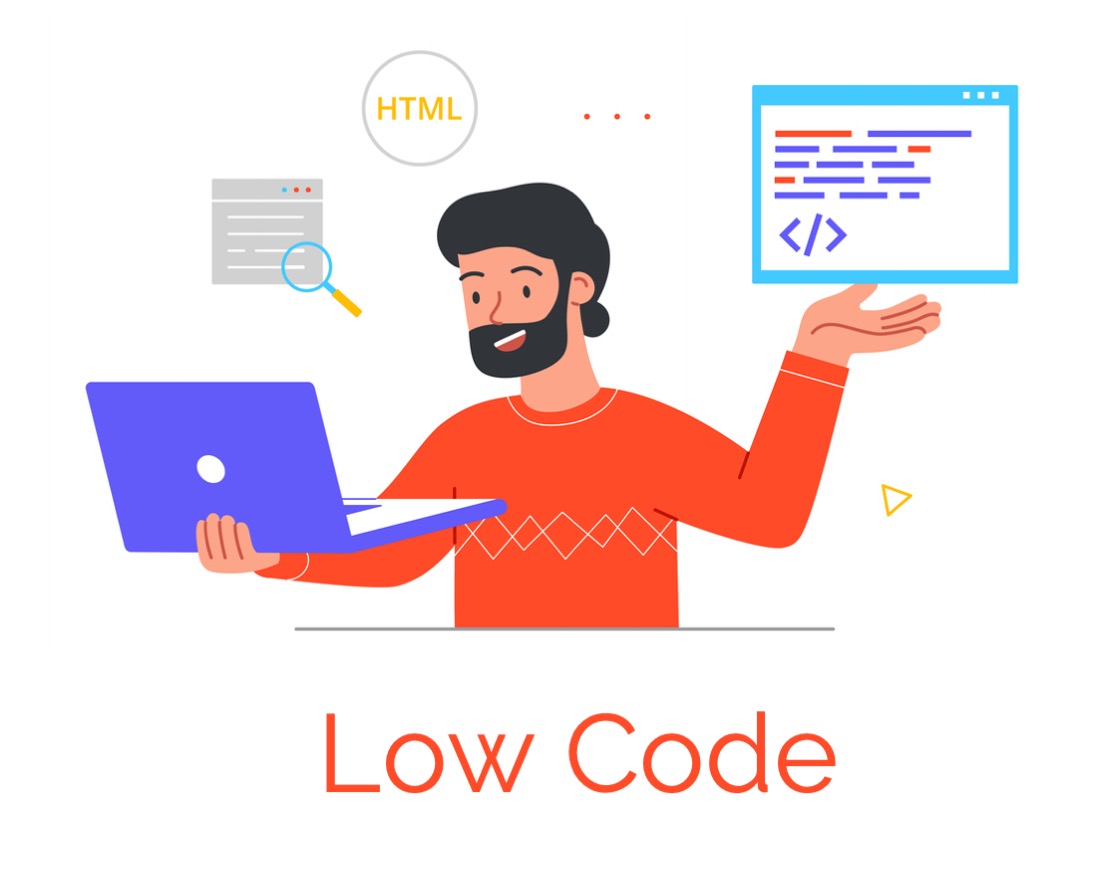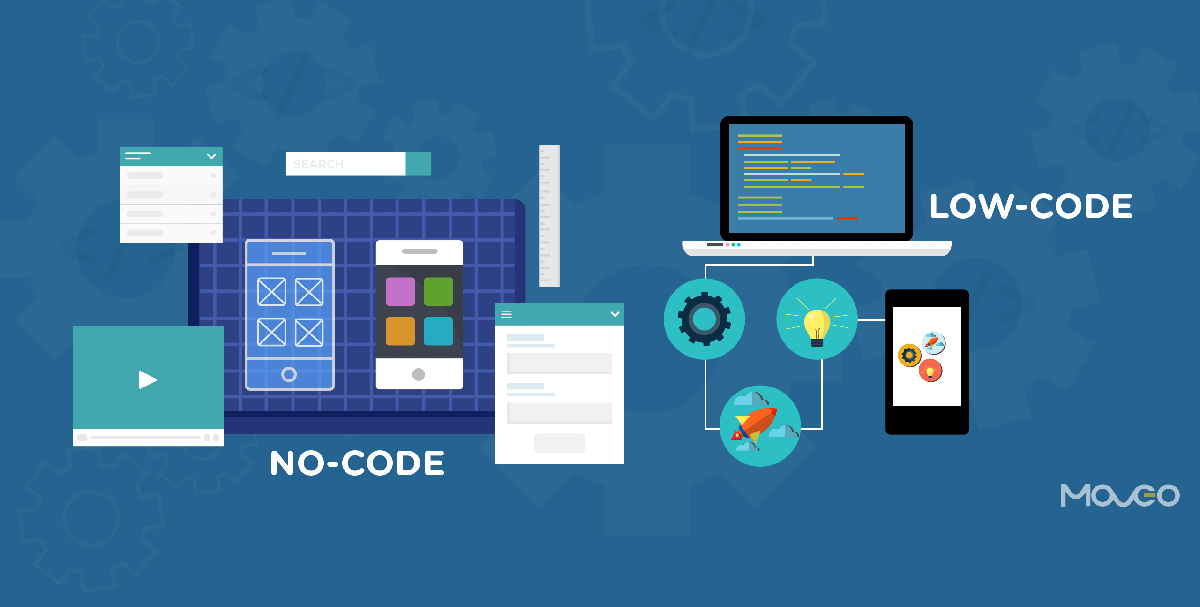Top News To Picking Legacy application modernization with Low-code
Advantages Of Low-Code Application Development In Terms Of Accessibility For Non-DevelopersDue to a number of factors the development of low-code applications is more accessible to non-developers. These are often called "citizens developers."
Drag-anddrop Builders: Lowcode platforms provide drag-and-drop interfaces, which allow nondevelopers to visually create applications without the need for code. This makes the process of developing easier for people with technical backgrounds.
WYSIWYG Editors: "What You See Is What You Receive" editors enable users to build interfaces and workflows a manner that closely resembles the actual product, which makes it simpler to use and understand.
Simplified logic and Workflow Design
Visual Workflow Modeling: Users can design business processes and application logic using visual flowcharts and models, which are more intuitive than the traditional methods of coding.
Pre-built Logic Components: Low-code platforms include logic components that have been pre-built (e.g. conditional loops and statements), which can be easily configured which eliminates the need for complicated coding.
Templates and components that can be reused:
Template libraries that are pre-built: Many low code platforms provide libraries that covers the most popular types of applications, providing non-developers to have a foundation to build on and later alter.
Reusable Modules and Widgets: By using the reuse of modules and widgets users can speed up the creation process while reducing their need for technical expertise.
Guided Development and Tutorials
Step-by-Step guide: Platforms provide instructions and help on screen for non-developers building applications.
Interactive Tutorials Interactive and hands-on tutorials let users learn by doing. They gain confidence by making use of the platform.
Integration with Existing Tools:
Seamless integration: Low-code platforms have been developed to integrate seamlessly with existing tools and systems for business (e.g. CRM, ERP) permitting non-developers to create applications within their current workflows.
APIs and Connectors : APIs integrated into connectors and APIs enable users and non-developers to connect their applications to external services, without the need to write complex coding.
Collaboration Features:
Team Collaboration - Features such as real-time team collaboration and shared workspaces enable non-developers to collaborate with analysts, professionals, analysts and other stakeholders.
Access control based on Role: Non developers can be assigned roles, with appropriate access levels. This allows them to participate in the development process without compromising security and functionality.
Automated Testing and Debugging
Test Tools Included: Many low-code platforms come with built-in debugging and testing tools. These tools automate the procedure, making it simple for non-developers ensure that their applications are operating properly.
Platform detects problems when they occur and offers fixes. This aids non-developers with solving problems.
The capability of low-code apps to make development accessible to non-developers is their biggest advantage. With its an intuitive, visually-guided tool and experiences, low-code platforms let business owners actively take part in and manage applications. View the top Low-code Platform for application development for blog info including azure sql server, multiplatform mobile app development, cloud software applications, low code platforms, mobile development platforms, build with docker, azure sql, paas service, rad development, rad application development and more.

Benefits Low-Code Apps In Governance And Safety
Low-code design of applications offers a variety of advantages in terms of security and governance. Both are vital to making sure that apps remain in compliance, safe and properly managed throughout their lifecycle. These are the major advantages.
Unified Manage Console: Lowcode-based platforms generally have a management console which allows administrators to manage and supervise applications.
Role-Based Access Control RBAC : These platforms typically have robust access controls based on roles, which enable administrators to create and enforce rules. Only authorized users are able to access and modify specific areas of an application.
Compliance and Regulatory Application:
Built-in Compliance Features: Many low-code applications are designed to conform to the industry norms and regulations (e.g. GDPR, HIPAA). They offer templates and tools to ensure that the applications are compliant with these regulations.
Audit Trails and Logging Audit trails and logs that are comprehensive can be integrated to allow companies to monitor changes as well as monitor access to ensure conformity.
Improved Security Measures:
Data Encryption Low-code platforms often come with built-in encryption of information in transit and at rest, protecting sensitive data.
Security Certifications A lot of low-code vendors have security certificates (e.g. ISO 27001, SOC 2 ) that demonstrate conformity to the highest security standards. This gives additional security to the users.
Automated Security Updates
Regular Patching and Updating: Lowcode platforms usually provide regular security updates. These patches safeguard software from the latest threats without the need for developer intervention.
Security Monitoring - Continuous security monitoring is typically comprised. It provides real-time insight and alerts regarding security risks that could be a threat.
Data Governance:
Data Access Policies These platforms assist organizations determine and implement their data access policies to ensure that only authorized users are able to access data and that it is correctly used.
Data Masking, anonymization, and Anonymization Tools: These programs can help protect sensitive personal information and are particularly helpful in testing environments.
Consistent Application Lifecycle Management
Pipelines for development and delivery: Low-code platforms often have integrated development pipelines as well as delivery pipelines that include security checks. Security is assured throughout the entire lifecycle.
Version Control - Integrated version controls helps monitor modifications to applications and allow the application to be reversed in the event of need. They also maintain the integrity and integrity of the software.
User Authentication, Authorization and Authorization
Single Sign-On (SSO). Support for advanced authentication and single sign-on is simple and improves security.
Multi-Factor Authentication : Many platforms include integrated multi-factor authentication, which adds an extra layer of security for accessing applications.
Policy enforcement and Compliance monitoring:
Policy Templates: Low-code platforms typically have templates for security and governance that allow organizations to quickly implement policies.
Compliance Monitoring Tools - These instruments permit constant monitoring of compliance status, and also provide the ability to report, making it easier to identify and resolve any issues that might arise.
Integration with Existing Security Infrastructure
seamless intergration: Low code platforms are designed to allow seamless integration with existing security tools and equipment, including Identity Management Systems, SIEM Solutions (Security Information and Event Management), and Firewalls.
API Security: Integrated API security makes sure that integrations with an external system are secure. Protect data and maintain the consistency of your application.
Training and the best practices
Best practices guides: A lot of platforms have guidelines and suggested procedures for the creation of secure applications. They help non-developers comply with security standards.
Some lowcode providers provide resources and security training for users to learn how to create and maintain secure applications.
Overall the security and governance benefits of low-code development make sure that applications are created and maintained in a safe as well as compliant manner. These platforms contain the tools and frameworks required to manage and oversee the development of applications, as well as protect sensitive data while maintaining regulatory compliance and enforcing policies. Follow the recommended Legacy application modernization with Low-code for site tips including low code platforms, azure sql databases, ms azure sql, azure sql server, application modernisation, cross platform mobile dev, app platforms, app development platform, sso azure, develop cross platform mobile app and more.

Benefits Of Low-Code Application Development In Terms Of Customization And The Limitations
The low-code approach offers a balanced method that permits significant customization and addresses issues. Here are a few key benefits.
Removing Complexity Barriers
Simple Development: Low-code platforms reduce complexity by providing templates and components that are pre-built that allow for quicker development and deployment for more complex applications.
Many platforms have wizards and workflows that are guided to help developers navigate complex procedures. These tools decrease the chances of errors, and ensure the consistency of.
Scalability Solutions
Built-in Scalability: Low-code platforms often include features that support the development of scalable architectures, which allows applications to handle increased loads without requiring significant changes.
Performance Monitoring: Using instruments for monitoring performance as well as tuning, optimization and tuning can assist applications to scale effectively.
Security and Compliance
Integrated Security Features: Low-code systems include security features such as encryption, role-based access control and automated checks for compliance, addressing common security concerns.
Regular updates: Platforms often upgrade their security protocols and conformity measures, making sure that applications are protected against new threats.
Customization Capabilities:
Extensibility:
Low-code platforms permit developers to expand functionality beyond what is available by integrating custom code.
Modifications and plugins that are custom Developers are able to create custom modules or plugins to include specific functions that are tailored to specific business needs.
APIs and Integration
API Support - Complete support of APIs allows seamless integration with external services and systems and permits extensive modification.
Low-Code Platforms: These platforms come with built-in connectors for popular third-party service providers, making it easier to integrate and customize apps.
Flexible UX/UI:
Customizable User Interfaces: Developers have the ability to modify and design user interfaces to meet certain design and usability specifications giving users a personalized experience.
Responsive Design: Built-in adaptive design capabilities mean that apps can be tailored to fit different sizes of screens and devices.
Business Logic Customization
Visual Workflow builders: These tools allow developers develop complex processes using little or no programming. They can design business processes and workflows in a visual manner.
Conditional Logic and Scripting: Platforms permit the inclusion of conditional logic as well as custom scripting to handle specific business rules and scenarios.
Data Management
Custom Data Models: Developers may create custom data models to fit specific needs of the application, ensuring that data handling is customized to the business needs.
Advanced Data Processor: The integration of sophisticated data processing tools and capabilities allows for the customisation of the method by which data is processed and analysed in the application.
Balancing Customization with Limitations
Frameworks and Standards
Best Practices: Low-code platform encourages compliance with standards and best practices in the industry. This can be helpful in maintaining high quality apps that are scalable, secure and reliable.
Governance Frameworks: Built-in governance frameworks ensure that any modifications do not affect the security, integrity or security of the application.
Iterative Development:
Rapid Prototyping: The capability to quickly test and prototype modifications allows developers to modify their designs based on feedback from users and refine the application to meet the needs of users.
Continuous Improvement: Low-code platforms allow for constant improvement. They can be customized and enhanced when business requirements change.
User Empowerment
Empowering Citizen developers: Low-code interfaces that are intuitive allow non-developers to make customizations. This can increase the number of people who can contribute to improve and customize applications.
Training and Support Many platforms provide an extensive amount of training and support to help users make efficient modifications without compromising the application's stability or performance.
Low-code applications provide a flexible framework that can be tailored to meet specific needs. This allows businesses to develop and maintain applications that function and adapted to meet specific business requirements. All while maintaining high quality, security scaleability, standards, and security.
